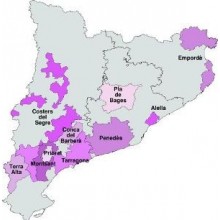
La vid y el vino fueron introducidos por los griego en el área del Ampurdán. En época de los romanos se desarrolló el comercio de los vinos del Campo de Tarragona y de Alella, en los alrededores de Tarraco y Barcino. Durante el siglo XVIII se extendió la exporta...
Catalog

Loading...
Cava Brut Nature Reserva, aged during 18 months with its lees
Red Wine Reserva, 18 months in french and american oak barrels
Camí Pesseroles is the reflection of its location, the old bridle path from Gratallops to Porrera, where you sink into the slate up to your knees. It also reflects that older...
Cava Brut Reserva, aged during 24 months
The evolution of the varieties makes it a powerful, elegant and long-lasting wine on the palate, capable of reaching the senses, leaving them face to face with the aromas of leather, tobacco or...
Ars Collecta, the legacy of almost five centuries of oenological know-how. The experience and exhaustive knowledge of our vineyards have allowed us to create this blend of varietals from two...
Martinet Bru is the door to Priorat. It is a wine of our times, more accessible in every sense. The farms where it comes from are farms that receive the garbinada, a humid, sea breeze that stands...
Red Wine Crianza, 12 months in french oak barrels
Clos Martinet is the Priorat of the 80s. The wine of those who believed in the terroir and dedicated all their efforts to taking care of the process, the form... It is the wine of the generation...
Avgvstvs Chardonnay is a great wine that gives us very ripe tropical fruit and small citrus touches on the nose and in the mouth. Its fermentation in French oak barrels gives it slightly toasted...
Milesimé Chardonnay is the result of selecting the best Can Rius grapes, full and ripe berries, expressive and lively, with enough structure to make the wine grow during bottle aging and...

La vid y el vino fueron introducidos por los griego en el área del Ampurdán. En época de los romanos se desarrolló el comercio de los vinos del Campo de Tarragona y de Alella, en los alrededores de Tarraco y Barcino. Durante el siglo XVIII se extendió la exportación. De una parte se exportaba el vino del Ampurdán al Languedoc, y por otra parte se estimuló el cultivo de las comarcas litorales y prelitorales por la exportación a América como vino concentrado en aguardiente. Desde Villanueva y Geltrú se exportaba la producción del Penedés, desde Salou la producción del Baix Camp y del Priorato, y en menor medida desde los puertos de Rosas, Begur, Mataró, Barcelona y Tarragona. A partir del 1865, con la irrupción de la filoxera en Francia, todos los puertos orientaron la exportación al Languedoc y Provenza para atender la gran demanda francesa. Entre los años 1878 y 1900 la filoxera acabó destruyendo toda la viña de Cataluña. La replantación comportó un cambio, pasando la producción máxima del Bages al Penedès, y provocando el despoblamiento del Priorat. La replantación de cepas blancas favoreció el desarrollo del cava. Se crearon las primeras cooperativas vinícolas en Alella, Igualada y Artés, impulsadas por la Mancomunidad de Cataluña. Coincidiendo con el modernismo se construyeron grandes "cellers cooperatius" (bodegas cooperativas), denominados "catedrales del vino", en Barberà de la Conca, Espluga de Francolí, Falset, etc. En Raimat se produjo una experiencia inédita en Europa.
